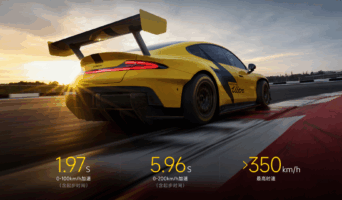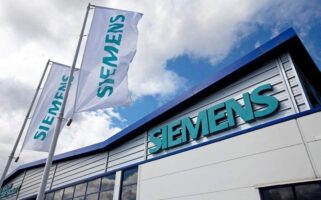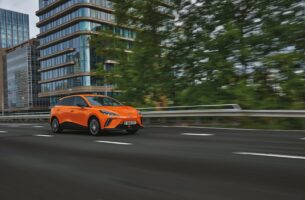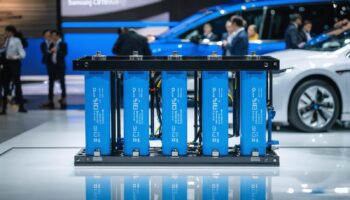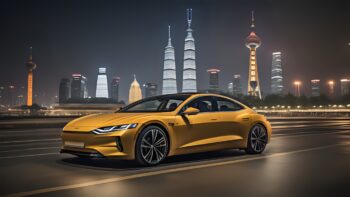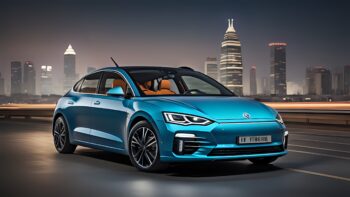Overview of car manufacturers: the transition from combustion engine to electric!
What does the car manufacturer’s path look like towards the end of combustion engines, which the EU has determined for new diesel and petrol cars from 2035?
The electric car segment at Volkswagen (VW) is faltering, and investments in electric car projects are also being postponed or even delayed by other manufacturers. The latest major manufacturer to deal with this is Volvo. The prospects for car manufacturers are clear: from 2035, new cars with diesel or petrol engines will no longer be allowed in the EU. CO2 emissions in the transport sector must be reduced to zero. According to EU plans, a reduction in greenhouse gas emissions in the transport sector is only achievable with electric cars. There may be a future for climate-neutral synthetic fuels (E-Fuels), but this will probably remain limited to a niche.
In Europe, the CO2 fleet targets for manufacturers have been set some time ago. According to recent figures from the consultancy Dataforce, car manufacturers are in danger of getting into trouble due to the stricter EU fleet limits for CO2 emissions from 2025. The problem is the abolition of the weight bonus, which was supposed to keep manufacturers of heavier SUV’s competitive. For example, from 2025 on average, emissions from new cars must fall from the current 116 g/km to less than 93.6 g/km, a reduction of 19 percent. Exceeding CO2 limits can result in fines of hundreds of millions of euros for major car manufacturers.
This is how car manufacturers are creeping out of the era of combustion engines.
Audi clearly formulates the exit point
Volkswagen’s premium subsidiary Audi has set a specific exit date: from 2026, the brand will no longer develop new cars with combustion engines. It has also been decided to stop using hybrid vehicles. The successor to the Audi Q5 will probably be the last new combustion car from Ingolstadt. This SUV model will be launched in 2026 and will be produced until 2033. After that, Audi only wants to build cars with combustion engines in China.
Audi wants to have 20 electric cars in its range by 2025. The premium manufacturer impressed in 2021 with the e-tron GT. The upcoming Euro 7 emissions standard had caused uncertainty for the manufacturer, but ultimately turned out to be less strict than expected. After the luxury model costing 150,000 euros, cheaper models followed, such as the Q4 e-tron, Audi’s first electric SUV on the MEB platform. This model should facilitate customers’ transition to electric mobility at Audi.
—
BMW: cautious aversion to the ban on combustion engines
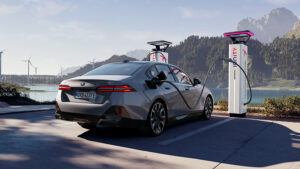
(Image BMW.com – BMW i5)
BMW, like other car manufacturers, is now looking for a way out and is preparing to offer and sell combustion engine cars in Europe even after 2035. “In our opinion, the ban on combustion engines was naive and must be adjusted,” CEO Oliver Zipse recently told BILD. BMW’s international business partners wonder why the EU is banning a technology in which Europe has a competitive advantage and which still offers great potential with low-CO₂ fuels. In particular, Zipse insists that the European Commission must do more for the production of E-Fuels, synthetic carbon-based fuels.
Previously, the Bavarian manufacturer followed an ambitious plan that was already starting to come true: In November 2023, the last combustion engine built in Munich left the production line, an eight-cylinder. Production of internal combustion engines was moved to Steyr in Austria and Hams Hall in the United Kingdom.
Targeting a 15 percent electric share
BMW increased the share of electric cars in the German market to 15 percent in 2023, and aims for 20 percent by 2024. Last year, BMW sold 376,000 fully electric vehicles in Germany, an increase of 74 percent compared to 2022. BMW aims to do so in 90 percent of all market segments have at least one fully electric model. By 2030, half of the cars sold worldwide should be fully electric.
After the electric pioneers i3 and the hybrid sports car i8 (both discontinued), BMW now has the electric SUV’s iX1, iX, iX M60, and the sedans i4, i4 M50 and i7. BMW CEO Oliver Zipse’s goal is clear: “The greenest electric car comes from BMW.”
X series remains with combustion engines
However, BMW is still sticking to combustion engines, especially in the X-series. Petrol and diesel engines will be offered well into the next decade, even on a newly developed platform. Four-, six- and eight-cylinder engines will be modernized. This two-pronged strategy appears to stem from uncertainty about which form of propulsion BMW customers will prefer between 2023 and 2035.
BMW is also positive about the use of E-Fuels. Hydrogen technology also plays a role at BMW. In August 2022, BMW opened a hydrogen expertise center with its own fuel cell production, and tested the drive in a small series of the iX5 Hydrogen.
—
Citroën mainly electrifies families
The French are also fully committed to the path towards electromobility. The Citroën ë-Berlingo and ë-Spacetourer (plus the long version “Business Lounge”) can transport families from A to B locally, emission-free. Customers are most enthusiastic about the SUV-like ë-C4, and since mid-2022 there is also the crossover variant ë-C4 on the market. By 2028, the era of combustion engines at Citroën could be coming to an end.
—
Dacia wants to utilize the potential of combustion engines for as long as possible
Dacia’s affordable cars will remain equipped with combustion engines for as long as possible, thus forming a counterbalance to parent company Renault and its electric strategy. “Everyone has to play their role. Renault aims to be the champion of electric motors, which entails a risk,” Dacia director Denis Le Vot told Reuters news agency. Dacia does not want to say goodbye to fossil fuels as a means of propulsion until 2035, while Renault wants to switch completely to electric vehicles from 2030. Meanwhile, the Dacia Spring Electric, the brand’s first electric model, is already available with a 65 hp engine.
—
Fiat: as a pure electric brand as early as 2027
Fiat has set ambitious goals. Currently, the Italian brand only has one electric car in its range, the Fiat 500 Elektro (also as a convertible), mainly designed for city traffic. The next fully electric model will also be a small car. Fiat plans to launch an electric Panda. By 2024, every Fiat must be available with an electric drive. Probably from 2027, and by 2030 at the latest, there will be no more combustion engines coming from Turin at all.
—
Ford: As a purely electric manufacturer from 2030? Ford relaxes plans
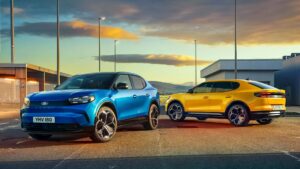
(Image: Ford Capri – ford.media.com)
Ford is relaxing its plans to operate as a purely electric manufacturer from 2030: If demand is there, Ford will continue to build combustion engines and hybrid cars for longer. In an interview with a car portal, Ford Germany CEO Martin Sander said: “If we see strong demand, for example for plug-in hybrid vehicles, we will offer them.” The currently high battery prices and uncertainties in the legal frameworks have also been cited as reasons for the delay. Still, electrification remains a long-term goal for Ford.
The Mustang Mach-E is seen as the start of electrification for Ford. By 2030, the entire supply in Europe must be electric. In contrast to the previous focus on electrifying large vehicles, more money will be invested in developing smaller electric vehicles, Ford CEO Jim Farley said in early 2024. Customers may be interested in electric vehicles, but many do not want a high price premium pay. According to the company, the transition to electric cars is inevitable. Ford uses VW’s MEB electric platform and already has a popular electric model on the German market with the Mustang Mach-E. An electric successor to the Fiesta could be built in Cologne in 2024.
In the US, plans to produce the F-150 Lightning as a fully electric full-size pickup were postponed in August. The plans for an electric full-size SUV with three rows of seats have even been scrapped. Instead, the manufacturer plans an electric mid-size pickup and an equivalent van. With this, Ford focuses on segments in which the company is already strong: pickups and commercial vehicles.
—
GM announces farewell to combustion engines
The American car manufacturer General Motors has also announced that it will only sell emission-free cars from 2035.
—
Honda is delaying the farewell to the combustion engine
The Japanese recently replaced the cute Honda e in Europe with the electric SUV e:Ny1 as the only fully electric car model to date. For the first time, Honda’s e:N architecture F, a front-engine platform, is used. The manufacturer wants to launch thirty new electric cars on the market by 2030. The complete phase-out of combustion engine production is planned for 2040.
—
Hyundai wants to be among the global top 3 of electric vehicles
The Hyundai Motor Group aims to become one of the three leading global manufacturers of electric vehicles by 2030 with its Hyundai, Kia and Genesis brands. Hyundai’s goal is to produce 1.51 million electric cars annually in Korea and 3.64 million worldwide, with an investment volume of about US$18 billion.
However, Hyundai has also noticed the general decline in demand for electric vehicles and wants to bridge this difficult two to three years, as recently estimated by an executive of the Korean company, with hybrid models and a range extender. For this purpose, a special combustion engine is being developed that continuously charges the battery of electric cars and should enable a range of 1,000 km.
Genesis will within 10 years, only electric cars in Europe
Hyundai’s luxury subsidiary Genesis has committed to becoming carbon neutral in its products and operations by 2045. From 2035, Koreans will only sell zero-emission vehicles in Europe. By 2040, Hyundai wants to phase out all fossil fuel vehicles in major global markets.
In the electric vehicle market, the Hyundai group is emerging with the Ioniq sub-brand, including the 800-volt rechargeable Ioniq 5 and Ioniq 6. By 2030, Hyundai wants to have a total of 31 electric models from the three brands in its range. Hyundai recently updated the Kona and will release the Ioniq 7 next year.
—
Jaguar: End of I-Pace and announces exit from combustion engine
Jaguar Land Rover (JLR) is also responding to declining sales figures in the electric car sector: more money is being invested in new models. Instead of approximately 18 billion euros, 21 billion euros will now be spent over the next five years to develop platforms for both combustion engines and electric cars. “Until a powertrain technology breaks through globally, we must continue to invest in multiple powertrains at the same time,” said Chief Financial Officer Richard Molyneux. Jaguar Land Rover sees it as an advantage that the company was a laggard in the field of electric mobility, because it has not yet fully played its cards.
In August 2023, the company had announced that it would present the first model based on a new electrical architecture at the end of 2024. The four-door limousine in good Jaguar tradition will follow at least two other models in 2025. The main basis will be the MLA Flex platform, which is intended for the Range Rover and can accommodate combustion engines, hybrids and electric cars. Initially, all vehicles with a combustion engine were to go out of production at the same time – JLR has now reversed this decision. Of the original six electric cars from the two brands, four now remain, which will be on the market until 2026.
The very first fully electric Jaguar model, the I-Pace crossover SUV built since 2018, will no longer be part of the range. Apparently not a big loss: the I-Pace was not a real hit for the manufacturer. In Europe, Jaguar sold about 40,000 units of the I-Pace until 2021, in the US only about 6,000. For comparison: of the combustion engine SUV F-Pace introduced in 2016, the manufacturer sold more than 120,000 units in Europe alone until 2021 .
Kia: 15 electric models until 2030
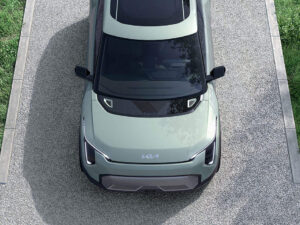
(Image Kia EV3 – KIA.com)
Hyundai’s sister Kia offers both highly efficient combustion engines and electric vehicles with groundbreaking 800-volt charging technology, and tailors the drives to customer wishes. The Koreans want to have 15 electric models on the market by 2030. By then, the plan is to achieve annual sales of more than a million battery electric vehicles, which would be about a quarter of total sales, Kia said at an investor day in April. By 2030, electric vehicles, as well as hybrids and plug-ins, should account for 58 percent of vehicles sold, amounting to 2.58 million units. Kia’s overall vision is to become a provider of sustainable mobility solutions, including as the global number one for specialty vehicles, such as delivery and logistics services. The models EV5, EV6 and the flagship EV9, as well as the new EV3, underline the brand’s high ambition.
—
Lamborghini is focusing on e-fuels and hybrids
Even Lamborghini announced in 2021, when presenting their future strategy, that it wanted to fully electrify. However, this is done less quickly, but thoroughly. “If we come, we have to be the best,” said brand chief Stephan Winkelmann. First, the Aventador, Huracán and Urus will be equipped with hybrid powertrains in the coming years, probably from 2024.
The first fully electric Lamborghini is expected to appear in 2028, in the form of a fourth model series. According to management, this could be “a Gran Turismo with four seats and slightly more ground clearance.” Nevertheless, Volkswagen’s Italian subsidiary wants to continue offering at least some super sports cars with combustion engines after 2030. “One possibility would be to keep the combustion engines alive with synthetic fuel,” President Winkelmann told “WELT am SONNTAG”.
—
Lancia: The Italians are coming back as an electric brand
Lancia has lost significance in recent decades. But that is coming to an end: since 2024, a ten-year plan has been in place for the brand, which once dominated the rally circuits of the world and brought the Lancia 037 to the road, which is still admired by Walter Röhrl.
The Ypsilon electric compact car recently came onto the market in Italy, and from next year also abroad. An as yet unnamed electric flagship will follow two years later, and the legendary Lancia Delta will return in 2028. According to reports, the new Delta will be a “muscular hatchback model that will delight car enthusiasts across Europe”.
—
Lexus becomes Toyota’s premium electric brand
So far, Lexus only has the UX 300e, a mid-sized crossover SUV with an alternative electric drive, and the slightly larger RZ, the sister model of the Toyota bZ4X, in the electric range. But by 2030, Toyota’s luxury division in Europe wants to offer at least one electric car in every model range, even a sports car. Five years later, this program will be expanded worldwide.
It could start around 2025 – with a small SUV. A year later, the successor to the ES luxury sedan could arrive, based on a new electric car platform. As a special privilege, Lexus is also the first brand within the group to use a new lithium-ion performance battery. This battery could charge from 10 to 80 percent in 20 minutes and offer a range of up to 800 km – a precursor to the solid-state battery with a range of 1,000 km that Toyota has already announced.
Lexus’ breakthrough is part of the new electric strategy of parent company Toyota, which wants to introduce 30 electric cars worldwide by 2030.
—
Maserati will stop with combustion engines in 2028
The Italian traditional brand, best known for its sporty sedans and coupes, shows an extraordinary commitment to the transition to electric propulsion. According to the “Handelsblatt” by the end of 2025, all models, from the Gran Cabrio to the QuattroPorte, will also be available as a fully electric version. And as early as 2028, the Stellantis brand Maserati no longer wants to offer cars with a combustion engine, while 2030 was originally mentioned as the exit year.
Maserati has currently presented the electric variant of the mid-sized SUV Grecale: the Folgore (Italian for lightning) that produces 560 hp. The larger SUV Levante will be taken out of production in a few weeks, and an electric successor is planned for 2027. Production of the Bi-Turbo V8, for which Maserati is known, was already stopped last year. The electric version of the QuattroPorte sports limousine will be available in 2028. Both models use the new Stellantis platform STLA-Large for large electric cars.
—
Mazda: Electric and combustion engines (with synthetic fuels)
“Mazda is pursuing a ‘multi-solution approach’, in which, in addition to battery electric powertrains, highly efficient combustion engines (with electrification) also play an important role,” said a Mazda spokesperson. He added: “In addition, we see great CO2 savings potential globally through the increased use of climate-neutral synthetic fuels.”
The Japanese manufacturer aims for climate neutrality by 2050. The company expects that by 2030 a quarter of all cars, such as the MX-30, will be fully electric and all other models will be partially electrified.
—
Mercedes builds electric cars and combustion engines in parallel
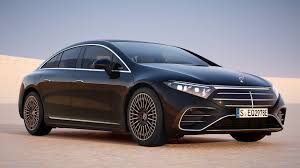
(Image: Mercedes-Benz EQS – mercedes-benz.com)
Mercedes originally planned to be fully electric by the end of the decade under the motto “electric only” – “wherever market conditions allow”. As early as 2025, all new vehicle platforms would be designed for pure electric propulsion. But CEO Ola Källenius has expressed doubts about completely abolishing the combustion engine. It was also recently announced that the new electric platform “MB.EA-Large”, which should be ready for the next S and E-class in 2028, will not be further developed. To save costs, Mercedes wants to adapt the existing “EVA2” platform for the new electric models instead.
Nevertheless, “the end goal remains the same”, Källenius told the “FAZ” in July. That goal is: Mercedes wants to be “CO2 neutral” by 2039. But because the transition to electric mobility is happening less quickly than expected in 2020, Mercedes is now taking a step back. Källenius wants to “thoroughly revise” the combustion engine so that it can last “well into the 2030s”. A significant part of the development budget of 14 billion euros is reserved for this purpose.
Mercedes focuses on the production of electric vehicles in the luxury segment worldwide. A successor to the EQS remains part of the range, in addition to an S-Class with a combustion engine. Introduced in 2023, the new E-Class will be the last new model on a pure combustion platform. Currently, Mercedes’ electric EQ portfolio consists of eight fully electric models: EQA, EQB, EQC, EQE, EQS, EQS SUV and the Van EQV. The EQE SUV model has been available at dealers since 2023.
In addition, many new combustion models are also coming onto the market. Yet, according to Källenius, Mercedes is sticking to its plan to build eight battery giga factories with a total capacity of 200 giga watt hours by the end of the decade.
—
Mini: Fully electric in the early 2030’s
The Mini brand, “will last launch a new model with a combustion engine in 2025 – after which only fully electric models will follow. Mini will then have a fully electric offering in the early 2030’s,” said a spokesperson for the company. concern. With the Mini Electric and the Mini Cabrio Cooper SE, the brand now has two fully electric models on the market.
—
Mitsubishi: Demand for combustion engines and plug-in hybrids
“Particularly in the segment of small cars under 10,000 euros, we still experience a very high demand for vehicles with a combustion engine. Given this demand, we currently have no plans to remove the classic petrol engine from our range. At the same time, we mainly see There is a high demand for plug-in hybrids in the higher segments, and we offer extensive services in addition to the vehicle itself, such as wall boxes and electricity tariffs, under our ‘We take care of you’ promise. In the long term we will further expand this offer,” said one Mitsubishi spokesperson in 2021.
Furthermore, the car manufacturer, which once pioneered electric vehicles with the i-MiEV (later Mitsubishi EV), is part of a three-way alliance with Nissan and Renault for the strategic development of electric mobility. In April 2022, Werner Frey, the director of Mitsubishi Germany, said that Mitsubishi will also launch an electric car “very soon”.
—
Nissan plans electric Micra successor by 2030
Nissan was a global pioneer in the field of electric cars with the Leaf and wanted to stop developing combustion engines for Europe after the Euro-7 engines before 2025. Together with partners Renault and Mitsubishi, the Japanese have developed a plan for fully electric vehicles and connected mobility by 2030. However, there will be an intermediate step: the positive experiences with the Qashqai e-Power have encouraged Nissan to equip more vehicles with a range extender, to ease the transition to electric mobility for customers. Although the e-Power models have a combustion engine on board that is refueled, they are powered by an electric motor that generates power from a built-in gasoline engine and stores it in a buffer battery.
Until 2026, Nissan is investing another 23 billion euros in its electric offensive and by 2030 the company wants to launch 35 new electric models. Of these, 90 percent will be based on five shared EV platforms covering most markets in key regions. One of the most important is the compact CMF-BEV platform, which will be launched in 2024. This forms the basis for 250,000 vehicles annually from the Renault, Alpine and Nissan brands, including a successor to the Nissan Micra.
A total of 15 models will be based on the global CMF-EV platform, including the Nissan Ariya EV Crossover. There will also be the LCV-EV family, which forms the basis for the Nissan Townstar. In addition, Nissan will lead the development of a new solid-state battery technology.
—
Opel will be purely electric from 2028
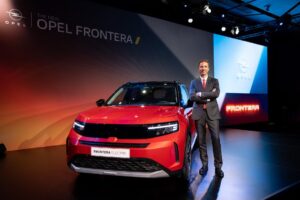
(Image: Opel Frontera – Stellantis.com)
“Our strategy is electric mobility for everyone,” said Florian Huettl, CEO of Opel, in an interview with AUTO BILD in June 2023. The first step with the modular multi-energy platforms such as the Opel Corsa Electric, the Astra Electric and the Mokka Electric, as well as the Combo, Vivaro and Movano vans, is expected to be completed by the end of 2024.
In a second step, battery electric Opel vehicles will come onto the market that no longer have combustion engines. Huettl also confirmed the “rebirth” of the legendary Manta as an electric car, but as a “new Manta for a new era, not a retro car”. From 2028, Opel will be completely dependent on battery electric vehicles in its core market Europe.
—
Porsche: The 911 is also being electrified
Porsche is increasingly using electricity. The second fully electric model will be the second series of the compact SUV Macan. It has been delivered since the second quarter of 2024; Previously, software problems had hampered production. As a combustion engine, the Macan will continue to be built for foreign countries – from mid-2026 there will only be the electric Macan. Orders are already in the five-figure range, as production director Albrecht Reimold recently told Automobilwoche. However, Porsche can change course at the Leipzig plant at any time and build more gasoline-powered Macans again if demand for electric vehicles drops.
The iconic 911 is still being built as a combustion engine for the time being. But soon there will be the 911 GTS T-Hybrid. The fifth Boxster model series with the suffix 718 will be definitively electric. The policy at Porsche is: “By the end of the decade, more than 80 percent of our sports cars will be electrically powered – as hybrid or fully electric. According to internal planning, this should be half by 2025,” said Porsche boss Oliver Blume. told BILD. The electric Cayenne will be launched in the coming years – Porsche has not yet communicated when.
—
Renault is taking the electric route
Renault continues the extensive electrification of its range. The Ampère unit, named after the famous French physicist, develops new electric cars for Renault. By 2027/2028, the manufacturer wants to reduce prices for electric cars to the level of combustion engines – by 40 percent compared to current levels.
The range of electric Renault models should be expanded to seven by 2031. Renault Megane E-Tech, Renault Scenic E-Tech Electric (to order), Renault 5 (to order) and the electric Renault 4 (2025) are already known. A new battery-operated Kangoo is also in the starting blocks. There is also a new, electric Twingo, which bears the name Legend internally and will cost around 20,000 euros.
The share of electrified Renault vehicles (e-cars and plug-in hybrids) is expected to rise to 65 percent of sales in Europe by 2025 and to 90 percent by 2030. Furthermore, Renault Group aims to reach 65 percent of sales in Europe by 2040 and globally by achieve carbon neutrality by 2050.
Together with partners Valeo and Valeo Siemens eAutomotive, the French want to design, develop and produce a new generation of electric drives for passenger cars without rare earth metals from 2027. Renault will lead the development of a common e-architecture within a three-party alliance (see Nissan) and launch the first fully software-defined vehicle by 2025.
—
Roll-Royce: From 2030 there will be no more combustion engines
Luxury manufacturer Rolls-Royce has just announced the brand’s first electric car, the Spectre, for late 2023. The coupe will be visually based on its Wraith sibling, but will forego the obligatory large-displacement V12. From 2030, all cars from the legendary manufacturer will do this. According to rumors, the necessary technology could come from BMW.
—
Skoda: mainly electric cars in 2030
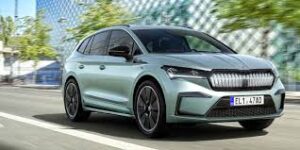
(Image: Skoda Enyag iV – Skoda-auto.com)
‘Next Level – Skoda Strategy 2030’ is the name of the program with which Skoda plans the future. However, there is no exact date for the departure of new combustion engine models in Germany. “We plan to achieve a 50 to 70 percent share of sales from pure electric vehicles by 2030,” a brand spokesperson said.
By then there should be at least three new all-electric models, all lower in price and size than the Enyaq iV SUV.
—
Stellantis (Fiat, Chrysler, Opel, Citroën, Peugeot) aims for global market leadership in electric vehicles.
According to its own information, Stellantis aims to become the global market leader in electric vehicles. With the fourth electric platform, the group has now literally laid the foundation for this. The new STLA Large e-platform is intended to enable large electric cars, i.e. large SUV’s and luxury sedans. It is designed for a battery size of up to 118 kWh and a range of 800 km. The platform is also suitable for combustion engines. Initially, American brands such as Jeep and Dodge, and later also Chrysler, Alfa Romeo and Maserati, will use it. By 2028, eight new models will be based on STLA Large. In addition to the large electric car platform ‘Large’, there are already the ‘Small’ platforms for small cars, ‘Medium’ for compact cars and ‘Frame’ for commercial vehicles.
Investment of 30 billion euros in 2030
Stellantis has set out its strategy from combustion engines to electromobility in the Dare Forward 2030 strategic plan. In total, the group is spending more than 30 billion euros on electrification and associated software development.
By 2030, CO2 emissions must be halved compared to 2021 and net zero CO2 emissions must be achieved by 2038. The remaining emissions are offset in a single-digit percentage. To achieve this, all passenger car sales in Europe and half of passenger car and light commercial vehicle sales in the US must be BEVs by the end of the decade.
The plans of DS, Peugeot, Fiat, Alfa Romeo and Lancia
DS Automobiles started in 2024. Under the e-Lion program, Peugeot aims to electrify every model in the range by 2023 and have a 100 percent electrified offering by 2025. By 2030, 100 percent of Peugeot models sold in Europe will be electric. Lancia will follow in 2026 (see above) and Alfa Romeo will be fully electrified in 2027. For Fiat, the group currently uses a period until 2030. Five of its own battery factories are intended to meet the need for energy storage. The expansion of the charging infrastructure must also be supported.
At the same time, Stellantis relies on e-fuels and is testing 28 engine families that will be or were built as petrol or diesel engines from 2014 to 2029. The use of synthetic fuels in the up to 28 million vehicles in Stellantis’ fleet has the potential to reduce up to 400 million tons of CO2 across Europe between 2025 and 2050, the company said.
As a next step, the Stellantis Pro One van division started series production of medium and large fuel cell vans in 2024. There are a total of eight model versions with hydrogen fuel cell drive, including the Opel Vivaro and Movano and the Fiat E-Ducato.
—
Toyota builds new electric cars and new combustion engines
Toyota wants to continue to give its brand friends the choice between electric cars and combustion engines. This decision essentially goes back to Akio Toyoda, the great-grandson of the company’s founder. He believes that up to 30 percent of the world’s vehicle fleet will be fully electric until further notice.
At the end of May 2024, Toyota even presented two 1.5 and 2.5 liter prototypes of new four-cylinder combustion engines that can digest biofuel, e-fuels, hydrogen and gasoline. They are very compact and intended for hybrid drive. Their weight is ten percent lower than that of comparable current engines.
Toyota wants to build them together with Mazda and Subaru.
Toyota’s holistic ‘Environmental Challenge’ strategy aims to reduce total CO2 emissions, whether from manufacturing, recycling or products, by 90 percent by 2050. By 2035, all production facilities must be climate neutral and all new models in Europe must be climate neutral.
At the same time, the Toyota Group wants to present thirty fully electric vehicles by 2030 and then sell 3.5 million of them annually. Toyota’s first electric SUV bZ4X came to Europe in 2022 and was significantly improved with the 2024 model. Seven further offshoots of the bZ series (bZ = Beyond Zero) will follow by 2025. The Japanese presented fifteen EV studies in one fell swoop at the end of 2021.
Hydrogen technology will replace diesel in commercial vehicles. “We are not fixated on combustion engines, that is not the stated goal. It’s not just about the combustion engine, I also have to think about the factories, the disposal of the vehicles, the power supply to achieve CO2 neutrality.” said a Toyota company spokesperson.
—
Volvo is postponing its electric plans, but has already said goodbye to diesel
From 2030, Volvo cars may only roll off the production line with battery-electric energy; At the beginning of September, the subsidiary of the Chinese Geely Group softened this goal. The goal was reduced to “90 to 100 percent” electric cars. If necessary, up to 10 percent of new vehicles would be produced as hybrids, Volvo said. Volvo cited the lack of expansion of charging infrastructure in some markets as the reason. “Full electrification remains the key pillar of Volvo Cars’ product strategy,” the company assured.
However, due to changing market conditions and customer demand, this cannot be achieved in 2030. Volvo currently has five fully electric models on offer, including the EX30, EX40 and EC40. Five additional models are in development. By 2025, electric cars are expected to account for 50 to 60 percent of sales. The last diesel engine from subsidiary Geely was produced at the beginning of 2024.
This makes Volvo the first major European car manufacturer to switch away from diesel.
Just like the Americans, the Scandinavians will also expand their subscription offering (this is how a car subscription works) – under the label ‘Care by Volvo’. The fully electric Volvo models hit the road in a complete package with service, warranty, roadside assistance, car insurance and home charging options if necessary.
—
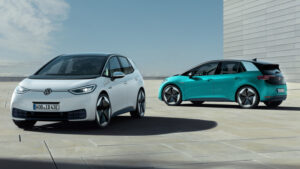
(Image: Volkswagen ID.3 – Volkswagen Newsroom)
Volkswagen postpones new platform for electric cars
The Volkswagen Group is facing a change that also affects its plans for electric cars. With a new group strategy, VW boss Oliver Blume wants to get Europe’s largest electric car manufacturer back on the road to success. Blume told Handelsblatt: “Volkswagen should be incorporated into the world’s leading automotive technology group. We want to bring the best technologies and services to society in a sustainable way.” This concerns domains such as design, platform concepts, software, battery technology, but also mobility offerings.
Firstly, the new electric car platform “SSP” (Scalable Systems Platform) was postponed until 2028. With the “New Car” business strategy, VW is gradually turning off the fuel tap to petrol and diesel engines. In Norway, VW has only been active as an electric car brand since January 2024, and combustion engines are no longer offered. The eighth generation of the Golf would be the last with a combustion engine. By 2030, it is expected that every second new car worldwide will have an electric motor, and by 2025 the group wants to be the world market leader in electric cars. The first VW solid-state battery was subjected to a 500,000 km test in Salzgitter.
When it comes to electrification, VW is increasingly relying on affordable cars. In May 2024, the group announced an electric car for less than 20,000 euros, called the ID.1. To reduce battery costs, the Volkswagen Group relies on a standard cell. The goal: to halve costs. VW is also announcing new electric models by 2026, “from the entry-level electric car to the ID.Buzz to the new flagship ID.Aero”.
By the end of this decade, six giant factories for the company’s own batteries are to be built in Europe to meet the Volkswagen Group’s ever-increasing needs. VW boss Blume is also focusing on the development of synthetic fuels such as e-fuels. He sees alternative fuels as an opportunity to reduce CO2 emissions from combustion engines, which will be on the road for decades to come.
The Group’s fleet and the entire company must be CO2 neutral by 2050. VW has set clear milestones with the Accelerate strategy and the ‘Way to Zero’. By 2030, 70 percent of all new Volkswagens in Europe must be purely electric. According to brand boss Thomas Schäfer, VW will produce the last vehicles with combustion engines for the European markets as early as 2033. In the US and China, the combustion engine will remain in the range for a little longer.
NOTE: Due to the major turbulent developments in the automotive world in recent times, certain statements and objectives above may no longer be entirely applicable.
*** The EU ban on the sale of new petrol and diesel cars from 2035 has been explained. All new cars and vans sold in the EU from 2035 must no longer emit CO2. And this is coming to us faster than we can imagine.
Source : AutoBild (with materiaal from dpa en Reuters)
Header : Volkswagen ID.7 – Volkswagen Newsroom
EVTrader® – The biggest EV-Database worldwide for all Electric Vehicles Manufacturers and Industry related companies.
